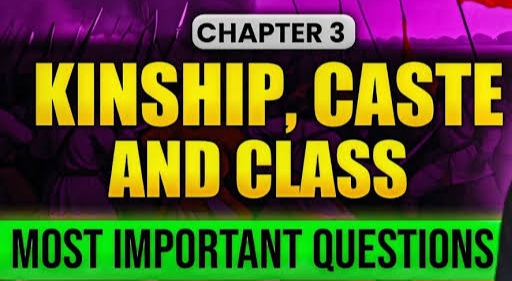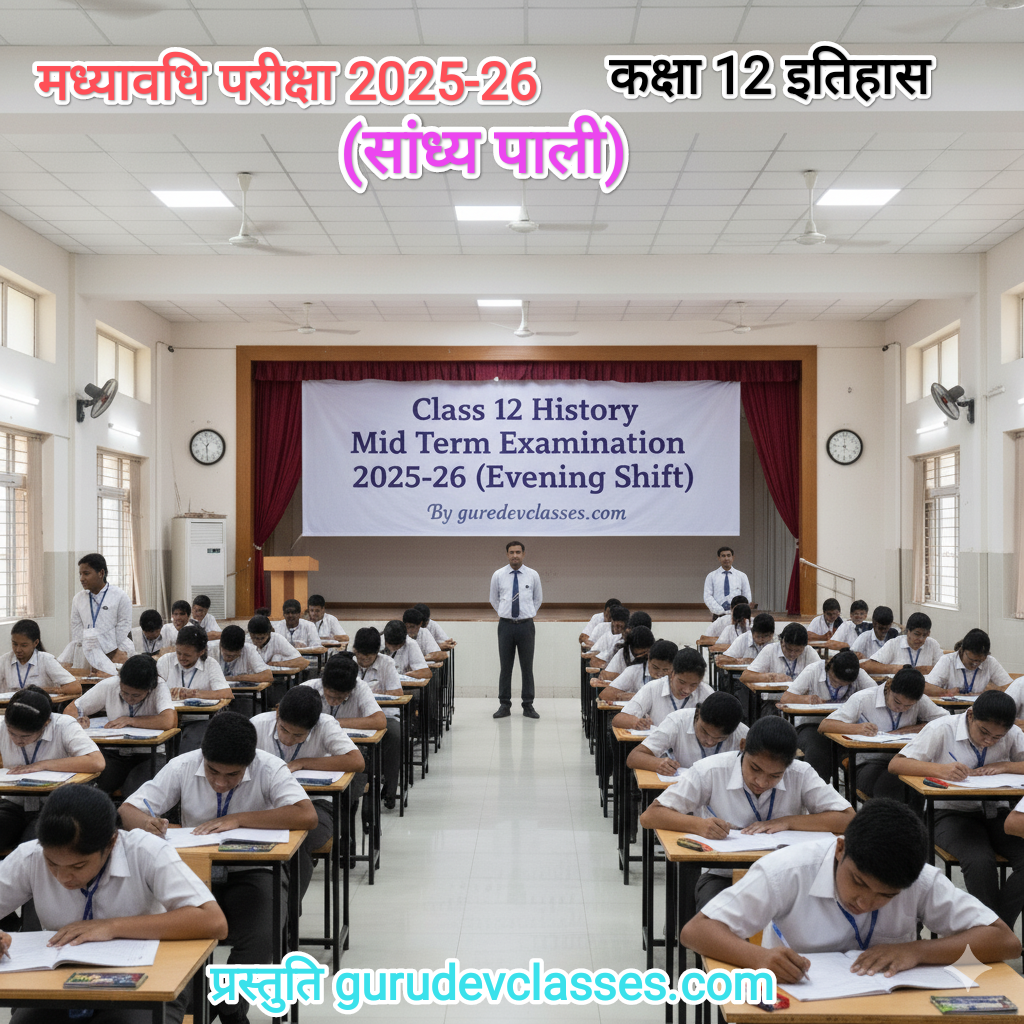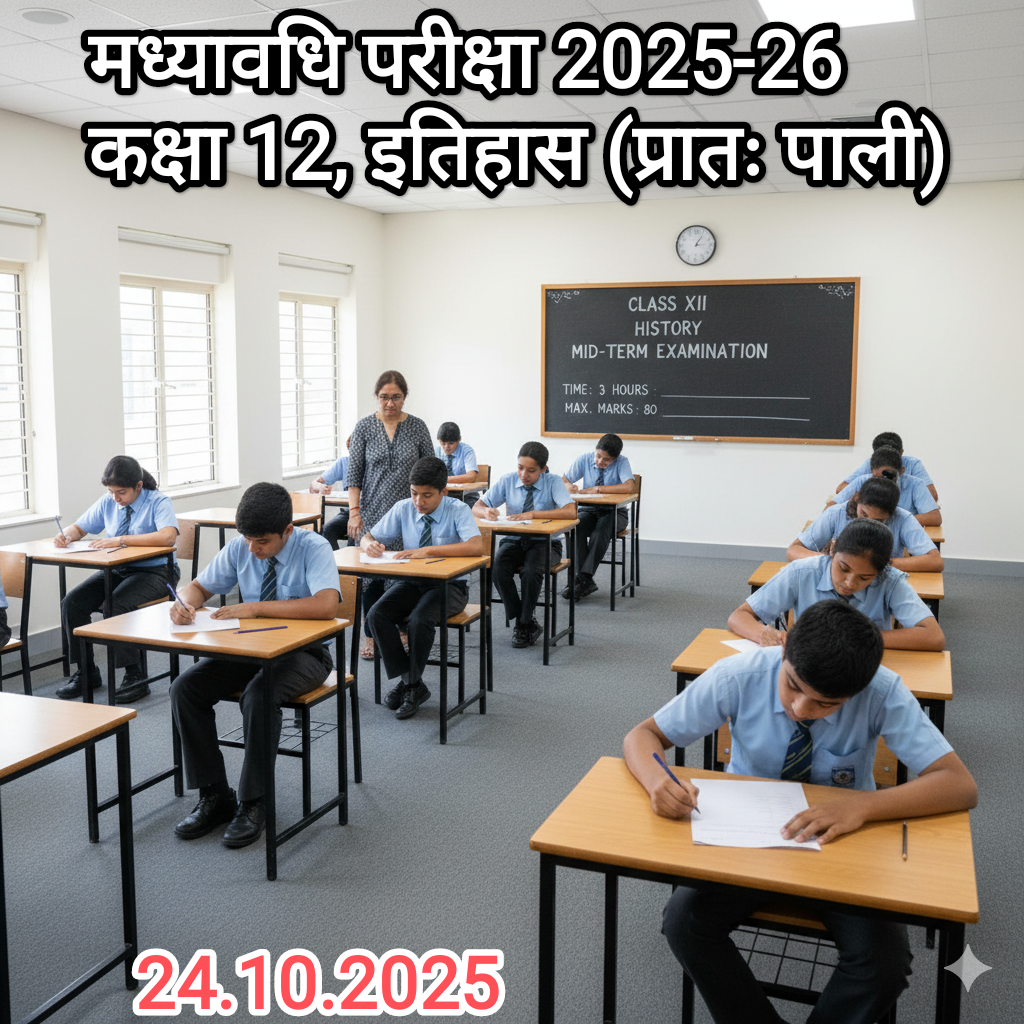Q1. What is gotra? Why was it important in early societies?
Answer: Gotra refers to a lineage or clan assigned to a Hindu at birth. It was particularly significant in Brahmanical tradition, as it dictated marriage alliances. Marrying within the same gotra was prohibited (exogamy). Gotra rules helped regulate kinship ties and control the sanctity of bloodlines, especially among the higher varnas like Brahmanas and Kshatriyas.
Q2. What role did the Dharmasutras and Dharmashastras play in defining social norms?
Answer: The Dharmasutras and Dharmashastras were Sanskrit texts that laid down social rules and duties based on varna and gender. They legitimized patriarchal authority, rules of marriage, inheritance, and caste purity. These texts strongly influenced Brahmanical ideas of conduct and were central in constructing early social hierarchies.
Q3. Mention three features of the ideal ‘patriarchal family’ according to early texts.
Answer: The family was patrilineal (inheritance through the male line).
It was patrilocal, meaning the bride moved to the husband’s house.
The senior male (usually the father) had authority over other family members and the right to divide property.
Q4. What was the significance of the Mahabharata for historians?
Answer: The Mahabharata is an important source to reconstruct social history of early India. It provides insights into kinship practices, norms of dharma, caste, gender roles, and the complexities of conflicts in society. Its layered composition reflects the values and dilemmas of the time.
Q5. What is meant by the term ‘varna’? How was it different from ‘jati’?
Answer: Varna was a four-fold classification of society: Brahmana, Kshatriya, Vaishya, and Shudra. It was a theoretical model.
Jati, on the other hand, refers to actual social groups or castes, often linked with occupation and region. Jatis were more numerous and flexible, unlike the rigid varna model.
Q6. Why is the Mahabharata considered a ‘dynamic text’?
Answer: The Mahabharata is called dynamic because it was compiled over centuries, with multiple layers of composition. It includes different viewpoints, social concerns, and literary styles, reflecting evolving ideas in society from about 500 BCE to 400 CE.
Q7. What is endogamy? Why was it followed in early Indian society?
Answer: Endogamy is the practice of marrying within the same caste or group. It was followed to preserve caste purity, maintain social status, and ensure inheritance remained within the community.
Q8. Who was V.S. Sukthankar and what was his contribution to the study of Mahabharata?
Answer: V.S. Sukthankar was the general editor of the critical edition of the Mahabharata at the Bhandarkar Oriental Research Institute. He meticulously collected manuscripts from various regions and compiled a reliable version of the text after comparing inconsistencies.
Q 9. What is the significance of the rules of marriage described in early texts?
Answer: Rules of marriage were crucial for maintaining varna hierarchy, caste purity, and inheritance rights. Marriages were arranged to strengthen social bonds, especially among elites. Texts promoted gotra exogamy and caste endogamy, ensuring control over women and lineage.
Q10. Explain the social order of the four varnas in early Indian society. How did it influence society?
Answer: The varna system divided society into four hierarchical groups:
Brahmanas: Priests, teachers, and scholars.
Kshatriyas: Warriors and rulers.
Vaishyas: Traders and agriculturists.
Shudras: Servants meant to serve the other three varnas.
This hierarchy was ideological, supported by religious texts. It influenced:
Social status and occupation.
Marriage alliances and family structures.
Ritual and purity codes (e.g., Brahmanas maintained purity through rules).
However, in reality, jatis and social mobility made society more complex than this neat model.
Q11. “The Mahabharata is a rich source of information on early Indian society.” Discuss.
Answer: The Mahabharata reflects values, practices, and concerns of early Indian society. It provides information on:
Kinship and family norms (e.g., succession, marriage, gotra rules).
Social hierarchies and caste dynamics.
Gender roles, especially women’s position and choices.
Moral dilemmas and interpretations of dharma.
Conflicts between varna ideals and reality.
It also reveals attempts to negotiate rules and offers alternative voices (e.g., Ekalavya, Karna) that challenge norms. Hence, it’s a multi-layered, dynamic text for historians.
Q12. Explain how gender roles were defined in early Indian society. How did these affect women?
Answer: Early texts such as the Dharmashastras defined women as:
Subordinate to fathers, husbands, and sons.
Expected to be chaste, obedient, and domestic.
Had limited rights in inheritance and decision-making.
Marriage was the central goal of a woman’s life. Women had little control over their sexuality and property. However, some texts (e.g., in Mahabharata) show exceptional women like Draupadi, reflecting complexities.
Thus, gender roles were restrictive but negotiated in practice.
Q13. Explain the contribution of Sanskrit texts and inscriptions in reconstructing the history of early Indian society.
Answer: Sanskrit texts such as the Vedas, Dharmashastras, and epics like the Mahabharata help reconstruct:
Social values (varna, gender roles).
Family structures (patriarchy, inheritance).
Ritual practices and ethical dilemmas.
Inscriptions (like land grants) show:
Patronage to Brahmanas.
Rights and duties of different groups.
Evidence of social mobility and disputes.
Thus, these sources provide ideals and practical insights, helping historians understand continuity and change.
Q14. Discuss how rules of marriage and kinship were used to maintain the social order in early Indian society.
Answer: Marriage and kinship were regulated to preserve social hierarchy:
Exogamy in gotra and endogamy in varna maintained caste purity.
Patriarchal families ensured male lineage and control over property.
Dowry and inheritance were means to manage wealth within kin groups.
Polygyny was allowed among elites for strategic alliances.
These practices controlled women and helped strengthen the dominance of higher castes, especially Brahmanas and Kshatriyas.
Q15. Critically examine how the Mahabharata has been used by historians to understand social history.
Answer: Historians use the Mahabharata to understand:
Kinship patterns, succession disputes, and roles of women.
Varna conflicts and aspirations of lower castes (e.g., Karna’s dilemma).
Shifts in values like dharma, sacrifice, war ethics.
The text is multi-authored and layered, allowing insights into changes over time. Critical editions, like those by V.S. Sukthankar, allow comparison of versions to identify interpolations and continuities. Despite being a literary epic, it reflects real concerns of society.
Q16 : “Mahabharata is a dynamic (moving) epic.” Explain this statement with suitable argumen.
Answer: The Mahabharata is called a dynamic or moving epic because it evolved over centuries, adapting to the changing values and concerns of Indian society. It is not a static text but one that was continually reshaped.
🔷 1. Long Period of Composition:
The Mahabharata was composed between 500 BCE and 400 CE.
It started as a narrative of a conflict between Kauravas and Pandavas, but with time, many new stories and teachings were added.
🔷 2. Multiple Layers and Authors:
It is not written by a single author. Many sages, poets, and scholars contributed to it.
The text reflects diverse views, values, and ideologies over centuries.
This makes it multi-vocal and suitable for various interpretations.
🔷 3. Wide Range of Themes:
It includes philosophy (Bhagavad Gita), ethics, war and peace, kinship, dharma (duty), caste, gender, and more.
Shows realistic portrayal of dilemmas, like those faced by Arjuna, Draupadi, and Karna.
🔷 4. Representation of Society:
Describes kinship rules, caste system, marriage customs, inheritance laws.
Presents both ideal and real aspects of society — including challenges and deviations from norms.
🔷 5. Adaptability and Survival:
The Mahabharata has been translated and retold in many Indian languages.
It has been performed in drama, dance, folk traditions, television, and films.
This flexibility makes it a “living text” – relevant even today.
Conclusion:
The Mahabharata is rightly called a dynamic or moving epic because it evolved over time, incorporated various viewpoints, and remains culturally significant. It is not just a religious or literary work, but also a mirror of ancient Indian society.
Q 17: What is the ‘Critical Edition’ of the Mahabharata? Describe its significance.
Answer: The Critical Edition of the Mahabharata is a scholarly attempt to compile the most authentic version of the epic by comparing and analyzing numerous manuscripts.
🔷 1. Why a Critical Edition Was Needed:
The Mahabharata was preserved orally and in manuscripts written in different regions.
These versions had additions, deletions, and variations.
A reliable text was necessary for historical and literary research.
🔷 2. Who Undertook the Work:
The project was initiated by the Bhandarkar Oriental Research Institute (BORI) in Pune in 1919.
The project was led by Vishnu Sitaram Sukthankar (V.S. Sukthankar), who was the General Editor.
Other scholars like Belvalkar and Kane also contributed.
🔷 3. Methodology:
Over 1,259 manuscripts of the Mahabharata from all over India were collected.
Scholars compared the versions line by line.
Interpolations and later additions were critically examined and marked.
The most authentic verses were compiled into the Critical Edition.
🔷 4. Final Output:
The Critical Edition was completed in 1966.
It contains around 89,000 verses, considered close to the original text.
It is a scientific version, useful for research, translation, and historical analysis.
🔷 5. Significance:
Helps historians distinguish between original and added portions.
Offers a more accurate picture of ancient Indian society.
Shows how social norms, values, and beliefs evolved over time.
Aids in understanding the structure of the text, its authorship, and composition process.
Conclusion:
The Critical Edition of the Mahabharata is a landmark in Indian literary scholarship. It has helped scholars, historians, and readers to access the core narrative, while recognizing the diverse cultural inputs that shaped it over centuries.







